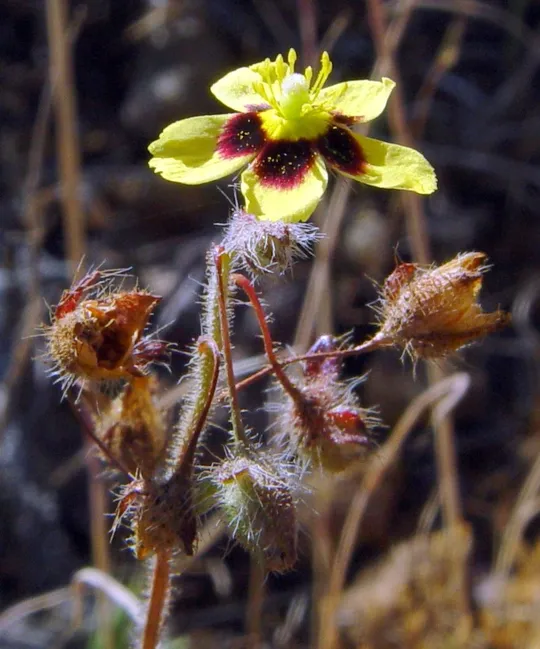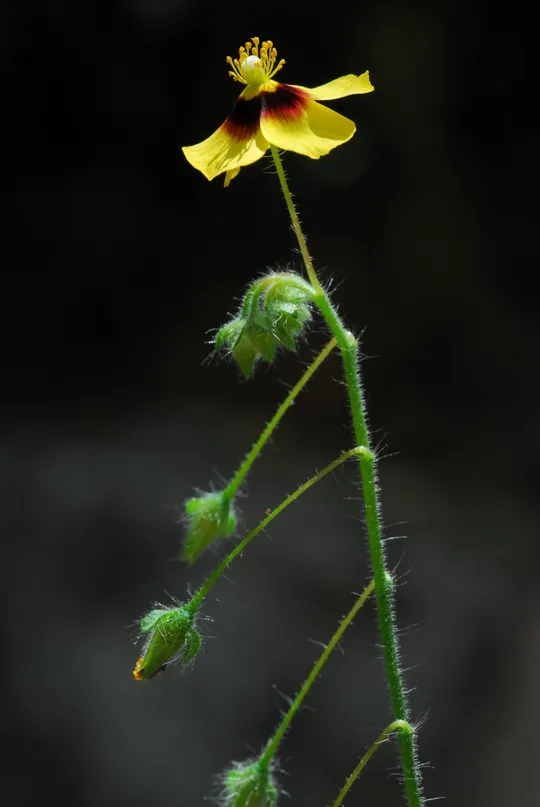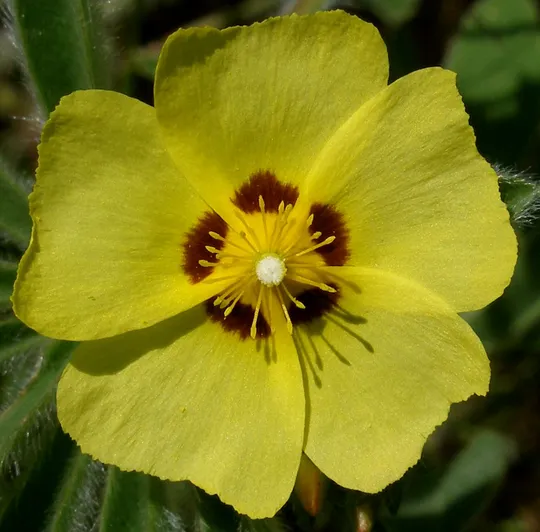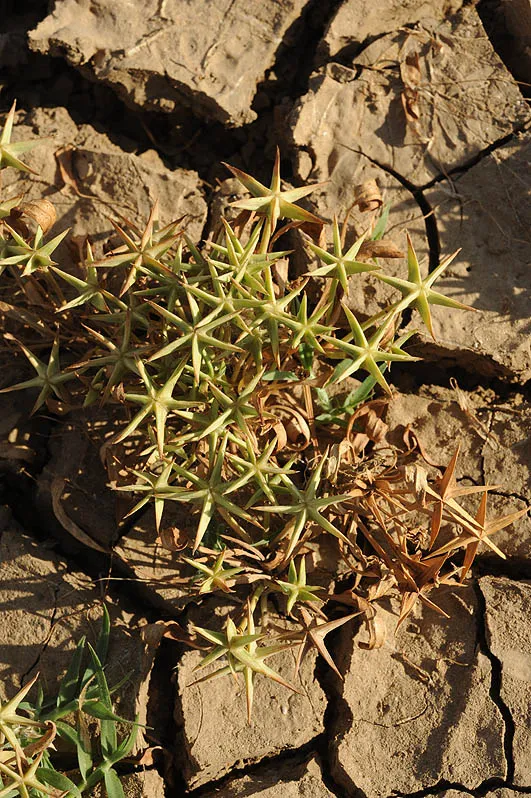European Forstweed, Spotted Rockrose
Tuberaria guttata



Xolantha guttata is found in
three regions on the coastal plain: the Acre Valley, the Sharon and Pleshet as
well as on Mount Hermon and the Golan Heights slopes. Up to the 1990s a total
of 21 sites were documented, but the species is now extinct from nine sites on
which it was formerly known. In the Acre Valley X. guttata grows on two sites on the coastal region in the Liman Reserve and its
environs. Most of the sites are in the Sharon: Zeta Hill southeast of Hadera, Sergeants Forest in
Netanya (a new site – Shir Vered, 2007), near Nordiya, Ilanot, Tel Mond, Herut,
Bney Tsion and eastwards to Ramat HaKovesh.
Populations that
were observed and collections were made many times in the Tel Alon Reserve (Tsherkes Ruins)
and in Pardes Hanna until the mid-1980s have not detected in recent years and
the plant has apparently disappeared from the Bney Tsion Reserve as well. X. guttata
also disappeared from the Ra'anana and Kfar Batya sites where it was observed
until the 1980s, as a result of construction in the area. The plant was
collected in the 1920s from Herzliya, Magdi'el and En Hay (Kfar Malal), but
does not grow there anymore. In Pleshet there are three sites in Kiryat Ono and
Bet Oved. In this region X. guttata is extinct from
Nabi Rubin and from Gedera. In the Golan it grows in Odem Forest and westwards
to Tel Fares, and on Mount Hermon it grows at four sites in the region of Maǧdal
Shams, Yafori Valley and Mount Keta.
On the coastal
plain – on red loam rich in clay, in scrubland vegetation of Sarcopoterium
spinosum and Fumana arabica,
or open garrigue of Calicotome
villosa and Cistus salviifolius, in close proximity to Lavandula stoechas and Lupinus
micranthus. On the Hermon foothills (in the Yafori Valley) and on Mount
Keta it grows on sandstone from the lower Cretaceous period. In Lebanon it
appears on similar substrates.
Xolantha
guttata is the only species in Israel belonging to the genus Xolantha that consists
of 11 species. The distribution
of the genus is mainly Mediterranean. Xolantha species are similar to annual Helianthemum
species and differ from them by their long pedicels and by the layout of the stamens.
In the western Mediterranean, some of the species are shrubs.
·
Xolantha guttata
now grows in the same regions on which it grew in the past, but the number of
its sites has been greatly reduced.
·
The species grows
in patches of a few dozen to several hundreds of plants and sometimes as
individual specimens.
·
The main threat factor
to X. guttata is the reduction of its habitat due
to its conversion to agriculture and for other development activities. The
activity of a single bulldozer is enough to eliminate an entire population. It
is not clear what factors led to its disappearance from the Tel Alon and Bney
Tsion reserves at the beginning of the decade. It is possible that this is a
temporary situation and that there are seeds in the seed bank in the soil. In
the Bet Oved hills the plants are threatened by the spread of construction. The
plant is protected in the Liman, Tel Alon (Tsherkes Ruins), and the Bney
Tsion reserves. As mentioned above, it is possible that the populations have
disappeared from the last two reserves.
·
The plant is found
throughout the whole Mediterranean Basin and is apparently not globally
endangered.
Known Xolantha guttata populations
should be subject to long-term monitoring to learn about
demographic trends in its populations and to understand the possible reasons
for its disappearance from several nature reserves. The main solution for the
preservation of this species is to protect and conserve the remaining
population sites, especially along the coastal plain, such as Ilanot, Ramat
HaKovesh and Bet Oved.
The range of Xolantha guttata
includes all the countries around the Mediterranean including the Mediterranean
islands with the exception of Egypt and Libya. Its distribution deviates slightly
beyond the Mediterranean Basin to Bulgaria and Portugal. Israel is the southern
limit of its distribution.
Xolantha guttata
is an annual plant characteristic of clayish red loam soil along the coastal
plain, to sandstone on the Hermon and to basalt on the Golan Heights. The species
is rare and peripheral. The loss and destruction of its habitat due to
conversion of the land to agriculture and other uses is the main risk to the populations.
Apparently it is not globally endangered.
פולק, ג. 1983. מבחר צמחים אופייניים לחמרה וכורכר: שמשונית הטפין. רתם 13: 149-151.
Current Occupancy Map
| 1000 squre meter pixel | 5000 squre meter pixel | 10000 squre meter pixel | |
|---|---|---|---|
| number of observations | 0 | 0 | 0 |
| in total pixels | 0 | 0 | 0 |
| Family | Cistaceae |
| Classification | On the endangered species list |
| Ecosystem | Coastal area |
| Chorotype | Euro– Siberian - Mediterranean |
| Conservation Site | Ilanot, Liman Nature Reserve |
| Rarity |
1
2
6
|
|---|---|
| Vulnerability |
0
3
4
|
| Attractiveness |
0
1
4
|
| Endemism |
0
0
4
|
| Red number |
1
3.7
10
|
| Peripherality | N |
| IUCN category | DD EW EX LC CR EN VU NT |
| Threat Definition according to the red book | Vulnerable |
 Based on:
Based on:






